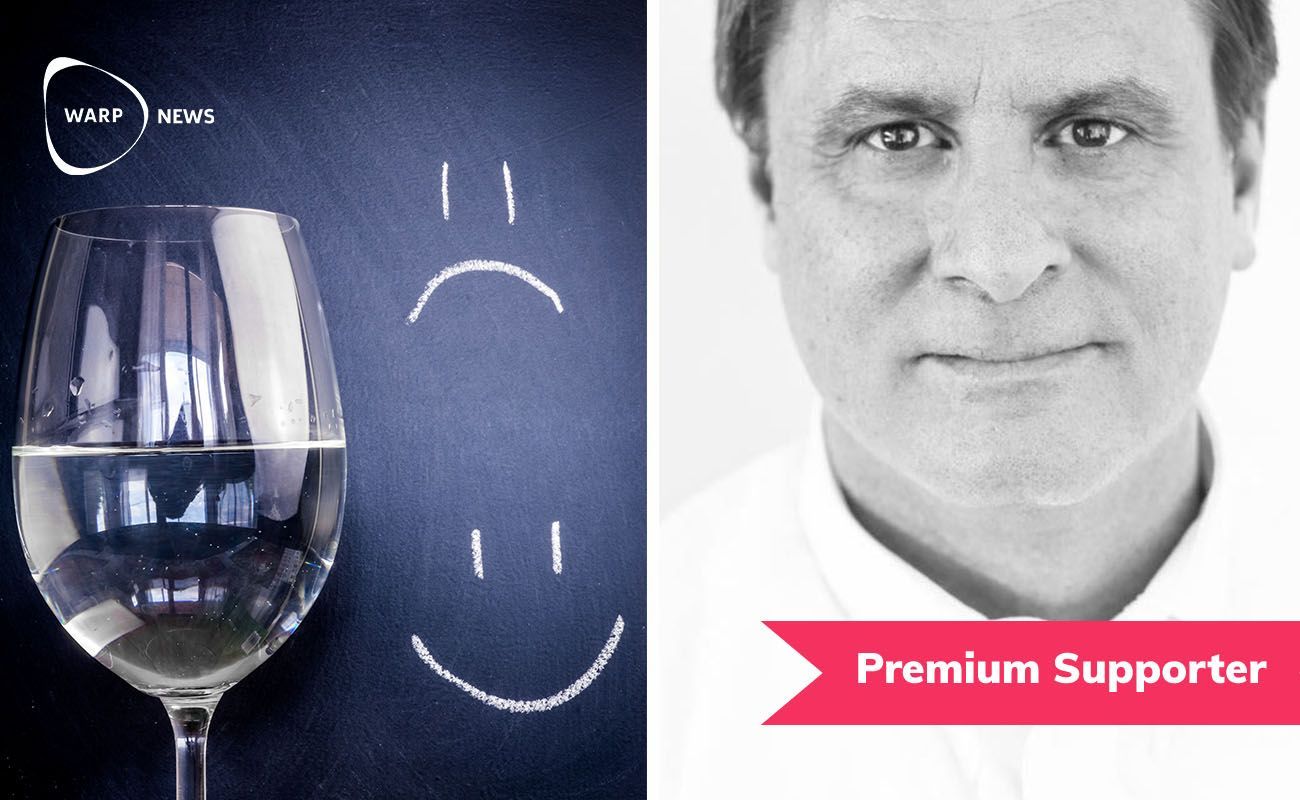
💬 Confessions of a pessimistic optimist
When Kelly Odell was first asked to contribute to Warp News, although not trying to show it, his reaction wasn’t 100% positive. In this column, he explains why.
Share this story!
When I was first asked to contribute to Warp News although I tried not to show it, my reaction wasn’t 100 percent positive.
On the one hand, I agreed with the concept of Warp News, providing optimistic news to counter-balance the predominance of negative news that bombards us every day. But on the other hand, I wasn’t sure I was the right person to contribute to such an endeavor. I simply wasn’t sure that I was enough of an optimist. I have lots of negative thoughts about all kinds of things all the time.
Surely, the job of communicating positive messages should come from other people who at least appear to be more positive, and optimistic.
That said I have never seen myself as a pessimist but sometimes I just can’t help seeing the dark side of things. It seems to me to be irresponsible and unrealistic to ignore the “bad” in the world and only focus on the good.
You might call me a “pessimistic optimist”, but I prefer the term “realistic optimist”. Somehow, through all the challenges and sometimes painful experiences in life I somehow always believe we can find a way. Honestly, what choice do we have?
As I reflected on how I would react to the opportunity to contribute to Warp I realized that Warp isn’t about ignoring the problems that face us in the world.
Warp’s role is to help create a bigger picture, a broader understanding. To steal a slogan from the famous American news broadcaster Paul Harvey, Warp's role is to provide “the rest of the story”.
It is said that “negative news sells” and there is a significant body of research that confirms and explains this phenomenon (for example Two Decades of American News Preferences | Pew Research Center).
Someone said, “The brain is like Velcro for negative experiences, but Teflon for positive ones.” There are good evolutionary reasons for this “negative bias”, primarily that if we do not survive negative events, we will not be able to experience positive ones. For this reason, the brain reacts to and processes negative information 3-4 times faster than positive. (The negativity bias: Conceptualization, quantification, and individual differences | Behavioral and Brain Sciences | Cambridge Core)
But the fact that negative news sells, doesn’t mean that there isn’t very important positive news that people would benefit from hearing. Even much of the negative news is not really all negative. For example, as bad as the pandemic has been for the world and clearly hit some of us much harder than others, there are some exciting positive stories, many of which have been presented by Warp News. One such example is the speed with which the Covid vaccines were created and distributed has set a new standard that can be applied to save lives in the future.
To paraphrase the renowned behavioral psychologist, B.F. Skinner, “the best way to modify behavior is with a combination of the carrot and the whip”.
There are certainly researchers who might not agree completely with Skinners “operant conditioning theory”. But no one in the world of behavioral research suggests that using only or primarily negative reinforcement is effective in the long term. The consensus seems to be to find the right balance in each situation.
So human beings may be hardwired for negative news, but we will fail to make good decisions if we do not get all perspectives, both the negative and the positive.
If we had lived in another world or a parallel universe where people were hardwired towards positive news, then an organization like Warp might well be necessary to provide the negative perspective.
Given that we live in the world we live in, commercially financed news sources will continue to be predominantly negatively skewed to guarantee that they make money. Perhaps not surprisingly, even “public service” news organizations tend to follow the same negative spin approach even if they in theory could provide a more balanced perspective.
To be fair public service typically prides itself on giving a balanced perspective on the news. But their idea of balance is typically to try to avoid political biases, not negativity biases. Public service while not dependent on viewers or subscribers for their income is still pressured to defend their existence. This defense is predominantly built on arguments of relevance and relevance is superficially defined as numbers of “eyes and ears”. The role of balancing the business of negative news falls upon non-profit organizations like the Warp Institute.
My own thinking led me to the conclusion that while Warp News is not a balanced news source, it is a critically important news source.
Warp News is open with its ambition to represent a “positive bias”. This positive biased news is not intended to replace all the negative bias news being pushed at us 24/7, it is only intended to balance it, to give a fairer and more correct view of the world around us.
If we discipline ourselves to take in and process more of the optimistic news even the most pessimistically hardwired brain will draw better conclusions and make better decisions.
By becoming a premium supporter, you help in the creation and sharing of fact-based optimistic news all over the world.


